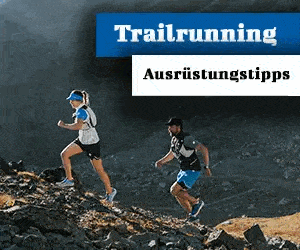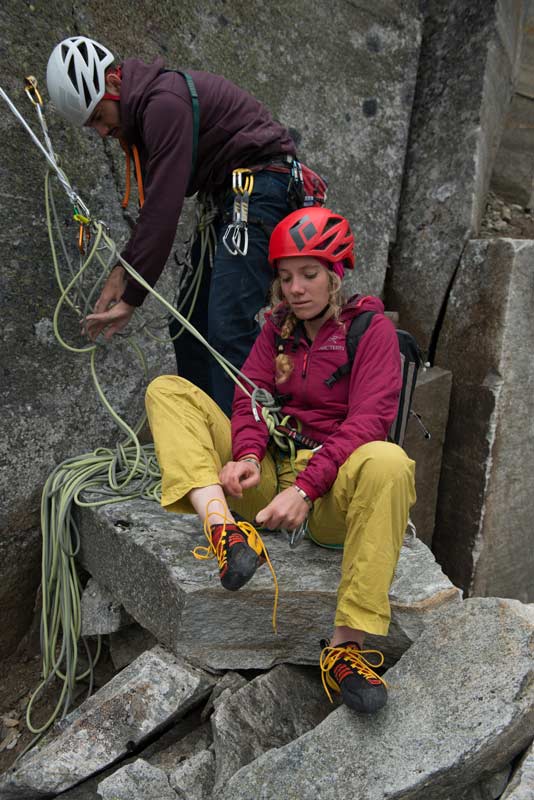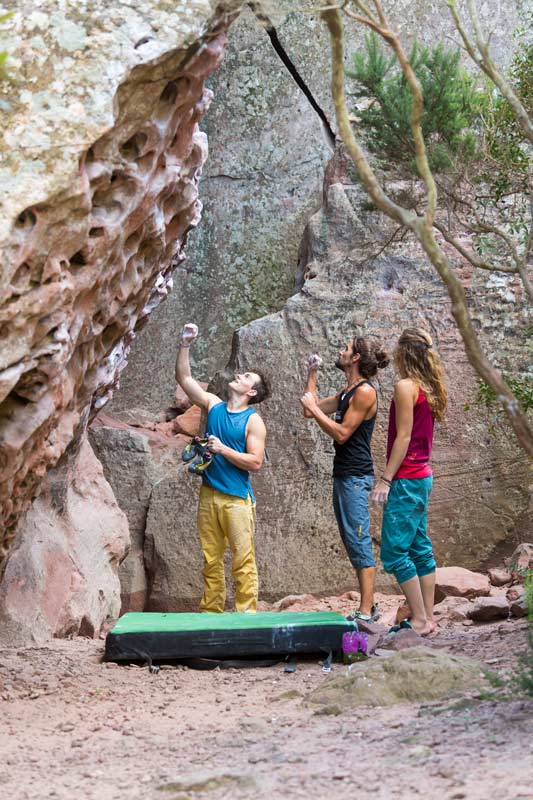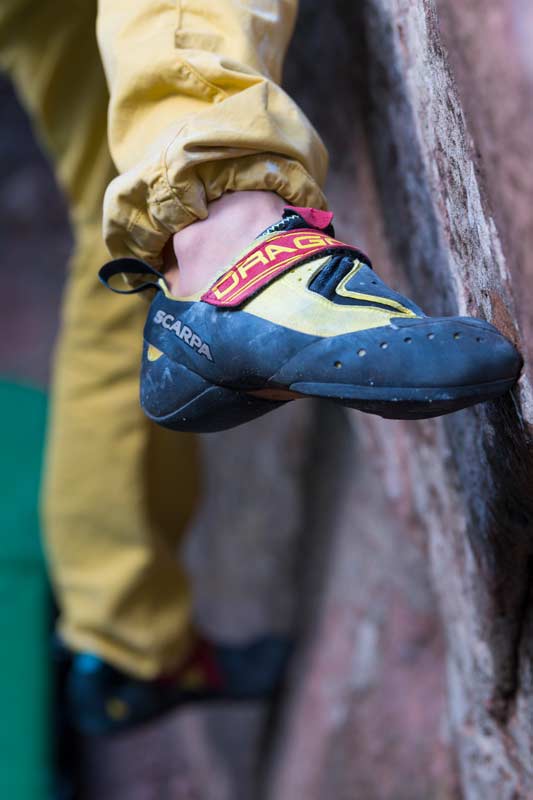Once you have found a suitable climbing finch, you won't give it up anytime soon. But with more training, progress and new areas of application, the demands on the shoe also change. When is the right time for another climbing finch? The range from softer models to more aggressive climbing finches with more pre-tension and downturn is varied.
An article by Michèle Daucourt, sales advisor at Transa Klettershop Pilatus Indoor
When buying your climbing finches, foot shape, level, area of application and of course personal preferences play an important role. When it comes to the shape of the foot, a distinction is often made between three types, Greek, Egyptian and Roman.
A Greek foot shape means that your second toe is bigger than your big toe. In the Egyptian shape, your toes slope down like a staircase and in the Roman shape, all toes are about the same length. Your foot shape gives a tendency for different brands and models. Nevertheless, it is important to test different models: the right climbing finch is as individual as you are.
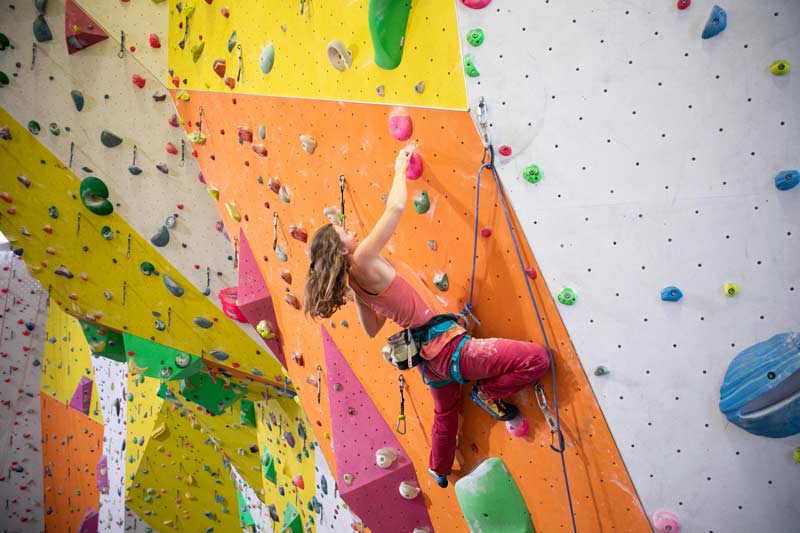
Your foot shape is not the only thing that decides on the right shoe. Your climbing level is also important. Newbies are often more comfortable in flatter shoes. Although they are snug, they are still comfortable thanks to the padding and very little pretension. Here it is advisable to choose about half a size less than the usual shoe size. There should be no pressure points on the Achilles tendon.


Harder climbing finches with pre-tensioning and downturn
When does a climbing finch with more bias fit? With more practice, there are more challenges: At some point there may be a moment when you stand on a steep climb and look into the roof and realize that I can't get up there with this shoe. Here a climbing finch can support your performance with more pre-tension and downturn.
But it can also be that your foot muscles still need support from a more aggressive shoe with more tension. What does that mean in concrete terms? With more pretension in the shoe, you can build up more tension in your toes and thus stand better on small kicks in a vertical wall. The shape of the climbing finches supports you with an elastic band that runs from the top of the heel to the sole. The heel is pushed forward more, so there is less space in the finch and the toes stand up. The pressure is completely in the front part of the climbing finch and you can build up more tension. So it is ideal for climbing on a steep wall or in roofs.
Often, climbing finches with pre-tensioning also have a «downturn». This means the bend between the heel and tip of the toe due to the correspondingly curved sole.
Often, climbing finches with pre-tensioning also have a «downturn». This means the bend between the heel and tip of the toe due to the correspondingly curved sole. This shape of the climbing finch also helps to focus more on the toes and makes pulling on the foot easier. There are also rubber inserts that make such a climbing finch even more aggressive.
A climbing finch with downturn is therefore not suitable for a straight wall with large steps.
A climbing finch with downturn is therefore not suitable for a straight wall with large steps, because it would just be painful there. After all, this shoe fits very well: When buying, we recommend choosing one and a half to two sizes smaller than usual. And the other side of the coin? You have to be honest here, such shoes are not really comfortable. Flapping cannot always be avoided. Especially at the beginning you have to bite something. But it remains important: climb in well!
Softer climbing finches: more sensitivity
The technologies related to climbing shoes are constantly evolving. Soft climbing finches are no longer just for newbies. This is based on a different approach for advanced climbers, which primarily requires well-trained foot muscles so that tension can be built up without a tight-fitting “finch corsage”. Imagine you are wearing thick gloves, which automatically restricts your sensitivity.
Imagine you are wearing thick gloves, which automatically restricts your sensitivity.
It is similar with your feet and toes when they are carrying harder and stiffer climbing finches. In a softer, dynamic climbing finch, you press your toes like you would on piano keys. You can press or tighten the back of the foot more freely and thus strengthen or weaken the downturn. A soft climbing finch is therefore much more polyvalent, but requires the necessary techniques to move and stabilize the foot correctly. Here, too, it takes some time until you feel at home in the climbing finch.
All-rounder models: no golden mean
What is suitable for climbing enthusiasts who neither want a soft shoe nor one with an aggressive camber? In many cases, an “all-rounder model” is used: a versatile climbing finch that has a little bit of tension for small steps, but is not quite as aggressive. Here it is advisable to choose one to one and a half sizes smaller than the usual shoe size. An all-rounder model is good for many things, but nowhere top. It often makes more sense for different areas of application to have different climbing finches.
Get advice
Not only climbing finches have changed, but also the climbing areas themselves. Where do you go climbing? Inside or outside? Depending on the region or country you are climbing in, you will encounter different conditions and walls. So the demands on your climbing finches are also different if, for example, you like friction more than kicks.
If you are into bouldering, you may need more hook zones on the shoe.
If you are bouldering, you may need more hook zones on the shoe than if you are on a multi-rope route. When trying on you should also make sure that you are wearing a climbing shoe that does not change much in shape or one that needs some time to get used to, but the material still expands. There is no silver bullet for the right shoe.
Above all, you should take your time trying on and get advice, listen to your gut feeling and feel comfortable in the climbing finch. Aspects of the climbing area, your level, your foot shape and of course your personal preferences support your choice, because the range of climbing finches is versatile.
Extend the lifespan of your climbing finches
Once you've found your favorite climbing finch (s), so should you proper care note. Sweaty feet are the breeding ground for stinky bacteria. Therefore, always dry your climbing finches well, for example with the Thermic Dryer V2 with integrated timer. What if the sole of your climbing finch is worn out? Then maybe do one Resole Sense to extend the life of your loyal climbing companion.


